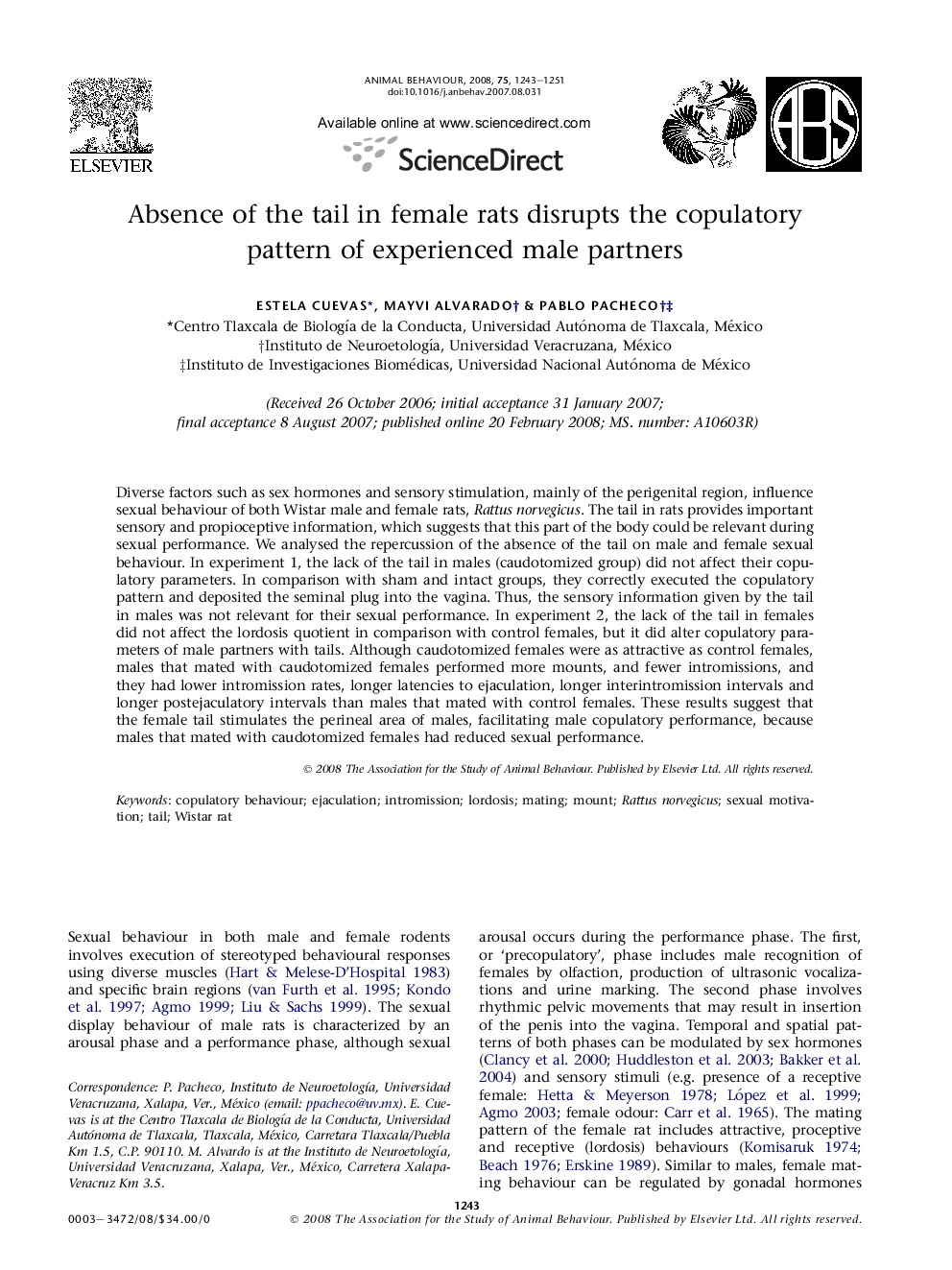| Article ID | Journal | Published Year | Pages | File Type |
|---|---|---|---|---|
| 2417739 | Animal Behaviour | 2008 | 9 Pages |
Diverse factors such as sex hormones and sensory stimulation, mainly of the perigenital region, influence sexual behaviour of both Wistar male and female rats, Rattus norvegicus. The tail in rats provides important sensory and propioceptive information, which suggests that this part of the body could be relevant during sexual performance. We analysed the repercussion of the absence of the tail on male and female sexual behaviour. In experiment 1, the lack of the tail in males (caudotomized group) did not affect their copulatory parameters. In comparison with sham and intact groups, they correctly executed the copulatory pattern and deposited the seminal plug into the vagina. Thus, the sensory information given by the tail in males was not relevant for their sexual performance. In experiment 2, the lack of the tail in females did not affect the lordosis quotient in comparison with control females, but it did alter copulatory parameters of male partners with tails. Although caudotomized females were as attractive as control females, males that mated with caudotomized females performed more mounts, and fewer intromissions, and they had lower intromission rates, longer latencies to ejaculation, longer interintromission intervals and longer postejaculatory intervals than males that mated with control females. These results suggest that the female tail stimulates the perineal area of males, facilitating male copulatory performance, because males that mated with caudotomized females had reduced sexual performance.
